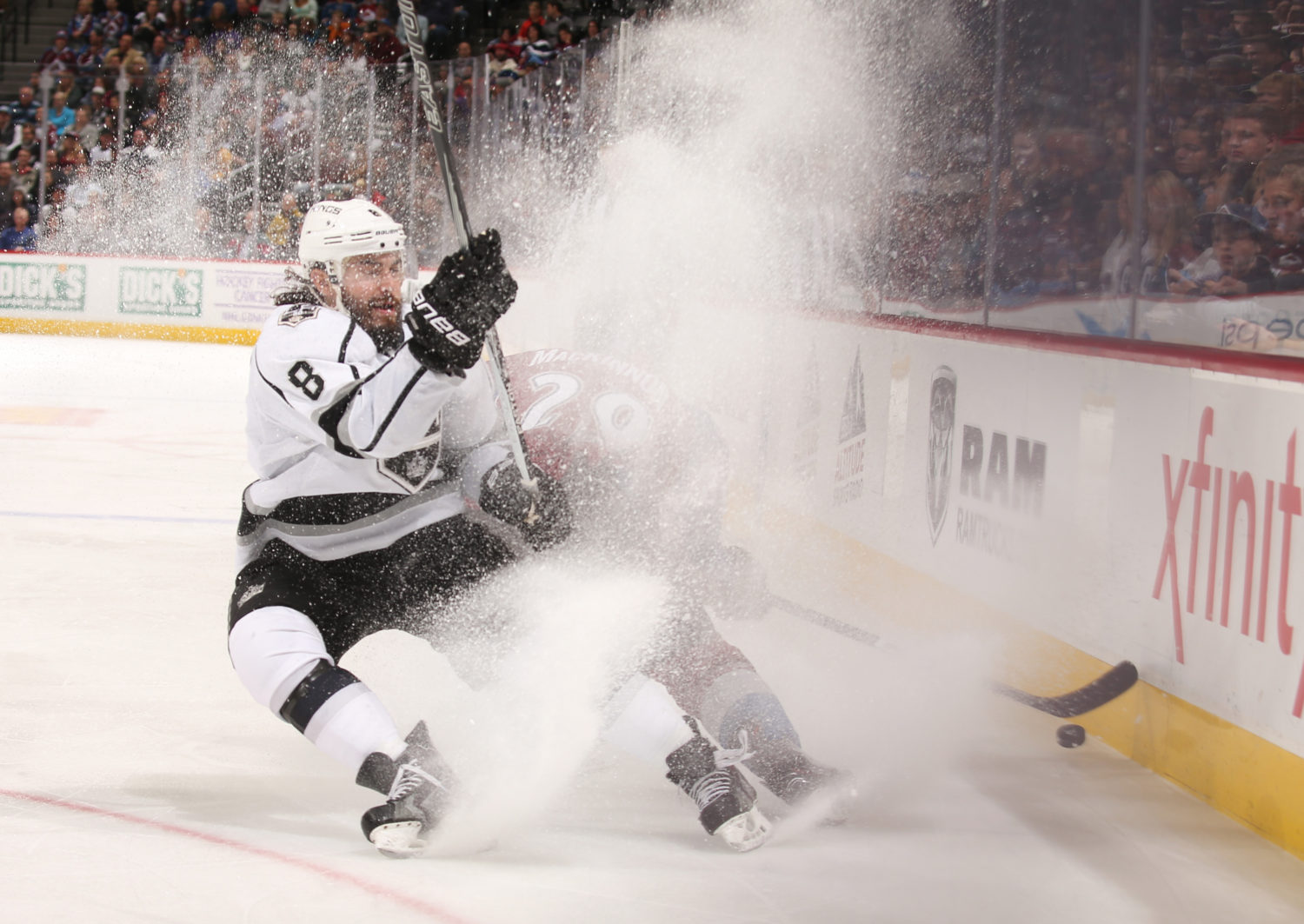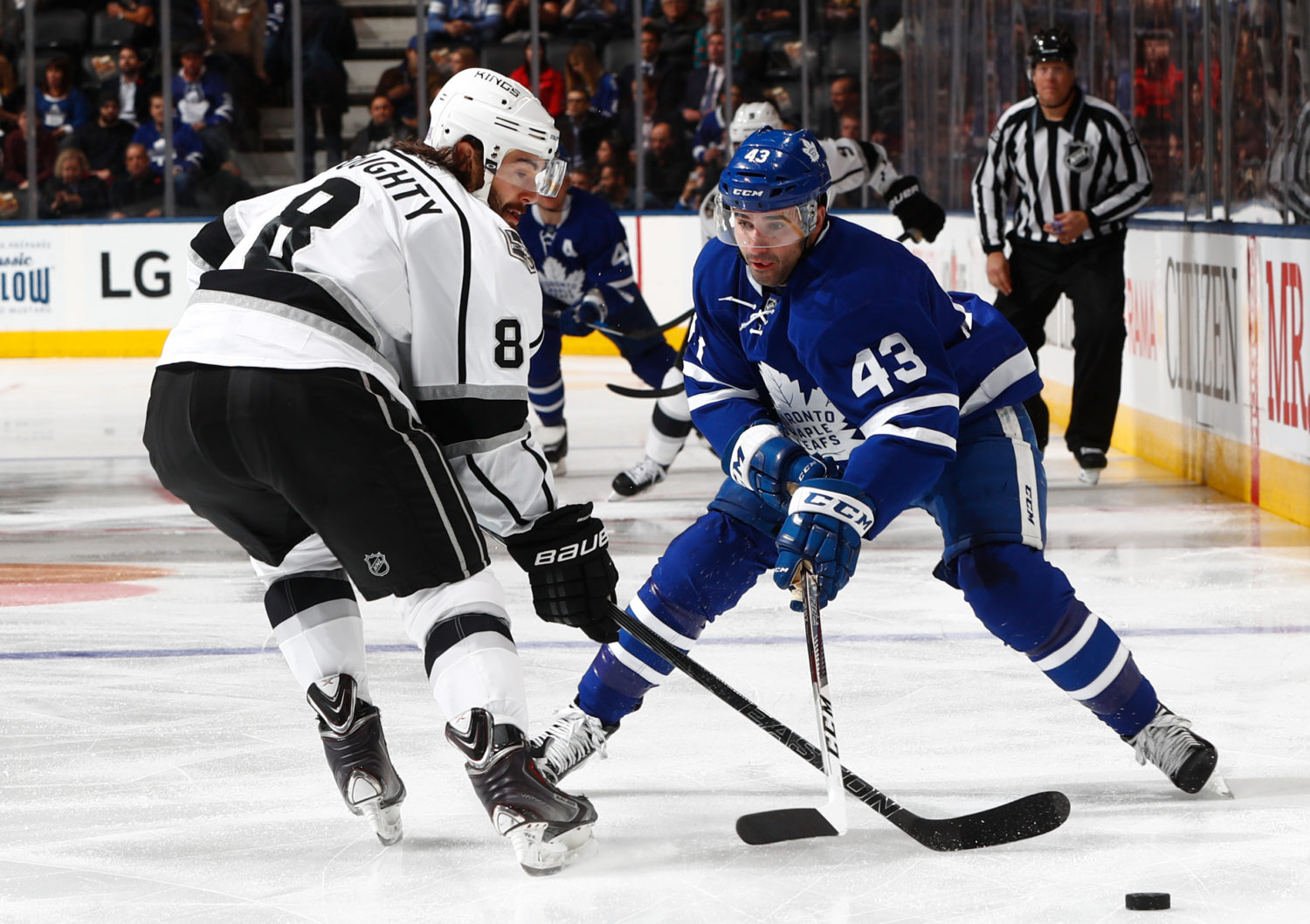Before appreciating Drew Doughty’s defensive ability in this story, it obviously needs to be acknowledged that the impetus of the article was spurred by a neutral zone turnover of his. Perhaps if he had put a little bit more zip on his cross-ice feed to Trevor Lewis in the second period of Sunday’s win at Anaheim, Andrew Cogliano wouldn’t have picked it off.
“Most odd-man rushes against come after a turnover or after a great scoring chance,” Darryl Sutter reminded reporters Tuesday.
Sutter was obviously referencing the former. But Doughty’s recovery following his turnover was so appropriately improvisational. He denied a developing quality chance off the rush, and it happened so quickly that Cogliano hadn’t yet chosen whether to pass or shoot the puck. In a moment the play was dead, felled by a diving Doughty stick check, and play was heading the other way.
“He’s a big time player that makes big time plays in a big time game,” Alec Martinez said. “I say it time and time again, I think he’s the best defenseman in the world and part of that is coming up with those big defensive stops when you need it and that play kind of comes to mind where I’ve seen him do that countless times.”
-courtesy Eric Burger
As Martinez noted, this wasn’t the first time Doughty has broken up an odd-man rush. The most memorable highlight was when he got the shaft of his stick on a Mike Fisher centering saucer pass, denying a Nashville three-on-one at Los Angeles’ net in overtime on October 31, 2015. He then fed the puck up-ice to Jeff Carter, who sauntered into the attacking zone and outwaited Pekka Rinne before roofing it underneath the crossbar. You remember the highlight.
We see these plays semi-frequently from the reigning Norris Trophy winner. It suggests several questions: How do you choose when to go down? When do you choose to take the shooter, and when do you cheat towards the passer? Which players in the league are the toughest to read off the rush?
Drew Doughty shared some of his on-the-fly decision-making abilities with LA Kings Insider.
LA Kings Insider: The other day, it was kind of like a three-on-one, how did you break up that play?
Drew Doughty: Well, I kind of threw the bad pass to create that 3-on-1 in the first place. He had speed coming down the wall and they kind of had one guy in the middle and one guy wide and I decided to take an attacking slide at him. If you slide kind of straight back then you’re gonna get got, but if you kind of slide at him, you give him no option but to move the puck and usually it hits you.
[Alec Martinez: That’s a Norris-trophy-winning type play, that’s what it is.]
LAKI: In a two-on-one-type rush, what are the core things that you have to watch from the forward with the puck – like who the forward is, whether he has speed?
DD: Definitely one of the first things I look at is who the forwards are. I guess even if it’s a defenseman, too – who the personnel is, that’s the first thing. You kind of establish right off the bat whether or not the guy with the puck is a shooter or a passer, and then from there on out you’re just kind of trying to bait him into making the pass and at the same time never letting the pass through, so really you’re just trying to give them the shot and let your goalie do the job and not make it tougher on the goalie. If you can bait them into the pass, then you intercept it.
LAKI: How do you use your stick on a play like that?
DD: You’ve got to move it around. You can’t keep it in one spot, because if you keep it in one spot then the players at this level are going to make you look dumb. You’ve got to be moving. Defensively, you’ve almost got to be using head fakes as if offensive guys coming down on defense throwing head fakes and you’re doing the same thing defensively, trying to bait them into something.
LAKI: At what point when you’re reading that play do you decide that you’re going to take on the guy with the puck or, if you want to, defend the pass?
DD: Sometimes if a guy bobbles it or something like that then you’ll kind of go at the shooter, but for the most part you’re faking at the shooter and then going back to the guy who’s waiting for the pass. A lot of times that causes the guy to just bobble it right there and then you can attack him, but if he doesn’t bobble it usually he’s taking too long to make a decision and then he’s right on top of the goalie and it makes it an easy save for the goalie.
LAKI: Is this all stuff that you’ve always had as a part of your game, or is this stuff that has grown with you as you’ve been in the NHL?
DD: I think I’ve always kind of had this part. I see defense very similar to offense where you’re making fakes and you’re making reads. You have to adjust your game for what the other guy’s doing and you know for the most part guys are going to try to fake one way and go the other way so you read that he’s going the other way and sometimes you’re wrong and you get beat. So I treat it kind of the same way, I’m just trying to read what they’re doing and make the play.
LAKI: Who are the most deceptive or tough-to-read guys when they have the puck and you’re defending one-on-one against the rush?
DD: Probably Kopi in practice, he’s pretty tough. Shoot, that’s a tough one. The Sedins, they’re pretty good at it. They have some of the best saucer passes in the league. Probably a guy like – jeez there’s so many guys, really. Getzlaf. Getzlaf would be a really tough one. If Getzlaf and someone else is coming down and Getzlaf has the puck that’s going to be a tough one for me.

(Michael Martin/NHLI via Getty Images)


Rules for Blog Commenting
Repeated violations of the blog rules will result in site bans, commensurate with the nature and number of offenses.
Please flag any comments that violate the site rules for moderation. For immediate problems regarding problematic posts, please email zdooley@lakings.com.